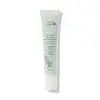What's inside
What's inside
 Key Ingredients
Key Ingredients

No key ingredients
 Benefits
Benefits

 Concerns
Concerns

 Ingredients Side-by-side
Ingredients Side-by-side

Salvia Haenkei Water
EmollientGlycerin
HumectantXanthan Gum
EmulsifyingAlgae Extract
EmollientHydrolyzed Yeast
Skin ConditioningMacrocystis Pyrifera Extract
Skin ConditioningHyaluronic Acid
HumectantLonicera Japonica Flower Extract
Skin ConditioningCitrus Aurantium Bergamia Fruit Oil
MaskingCedrus Atlantica Bark Oil
MaskingVetiveria Zizanoides Root Oil
MaskingCitrus Sinensis Peel Oil Expressed
PerfumingSalvia Officinalis Oil
MaskingLavandula Angustifolia Oil
MaskingSalvia Haenkei Water, Glycerin, Xanthan Gum, Algae Extract, Hydrolyzed Yeast, Macrocystis Pyrifera Extract, Hyaluronic Acid, Lonicera Japonica Flower Extract, Citrus Aurantium Bergamia Fruit Oil, Cedrus Atlantica Bark Oil, Vetiveria Zizanoides Root Oil, Citrus Sinensis Peel Oil Expressed, Salvia Officinalis Oil, Lavandula Angustifolia Oil
Hippophae Rhamnoides Water
MaskingGlycerin
HumectantButyrospermum Parkii Butter
Skin ConditioningPlatonia Insignis Seed Butter
EmollientCocos Nucifera Oil
MaskingSimmondsia Chinensis Seed Oil
EmollientCetearyl Olivate
Sorbitan Olivate
EmulsifyingCassia Angustifolia Seed Polysaccharide
Skin ConditioningChrysanthellum Indicum Extract
Skin ConditioningAlteromonas Ferment Extract
Skin ConditioningJojoba Esters
EmollientHelianthus Annuus Seed Wax
Skin ConditioningAcacia Decurrens Flower Wax
EmollientPolyglycerin-3
HumectantBeta-Glucan
Skin ConditioningAlgin
MaskingLonicera Japonica Callus Extract
Skin ProtectingXanthan Gum
EmulsifyingCitrus Aurantium Bergamia Fruit Oil
MaskingCedrus Atlantica Bark Oil
MaskingVetiveria Zizanoides Root Oil
MaskingCitrus Sinensis Peel Oil Expressed
PerfumingSalvia Officinalis Oil
MaskingLavandula Angustifolia Oil
MaskingHippophae Rhamnoides Water, Glycerin, Butyrospermum Parkii Butter, Platonia Insignis Seed Butter, Cocos Nucifera Oil, Simmondsia Chinensis Seed Oil, Cetearyl Olivate, Sorbitan Olivate, Cassia Angustifolia Seed Polysaccharide, Chrysanthellum Indicum Extract, Alteromonas Ferment Extract, Jojoba Esters, Helianthus Annuus Seed Wax, Acacia Decurrens Flower Wax, Polyglycerin-3, Beta-Glucan, Algin, Lonicera Japonica Callus Extract, Xanthan Gum, Citrus Aurantium Bergamia Fruit Oil, Cedrus Atlantica Bark Oil, Vetiveria Zizanoides Root Oil, Citrus Sinensis Peel Oil Expressed, Salvia Officinalis Oil, Lavandula Angustifolia Oil
Ingredients Explained
These ingredients are found in both products.
Ingredients higher up in an ingredient list are typically present in a larger amount.
This ingredient comes from the bark of the Cedarwood tree.
Though this oil exhibits antibacterial and antioxidant activity, it is also contains skin-irritating fragrances such as limonene.
In 2023, it was listed as an EU known-allergen.
Learn more about Cedrus Atlantica Bark OilCitrus Aurantium Bergamia Fruit Oil is the oil from the bergamot orange. It is native to Italy.
This ingredient is used to add fragrance to products. It contains limonene, linalool, and linalyl acetate.
The term 'fragrance' is not regulated in many countries. In many cases, it is up to the brand to define this term. For instance, many brands choose to label themselves as "fragrance-free" because they are not using synthetic fragrances. However, their products may still contain ingredients such as essential oils that are considered a fragrance.
When used topically, Citrus Aurantium Bergamia Fruit Oil is a photosensitizer due to its furanocoumarins. Photosensitizers make the skin and eyes much more sensitive to sunlight. Photosensitizers are linked to skin cancer.
However, more cosmetics using Citrus Aurantium Bergamia Fruit Oil are removing the furanocoumarins.
Bergamot oil was also found to have anti-inflammatory, antibacterial and antifungal properties.
Learn more about Citrus Aurantium Bergamia Fruit OilSweet orange peel oil is created by cold-pressing the sweet orange's peel until the oil is released.
This ingredient is generally safe but may result in phototoxicity or dermatitis in higher concentrations due to citrus' furocoumarins content.
Furocoumarins are phototoxic when exposed to UV.
Learn more about Citrus Sinensis Peel Oil ExpressedGlycerin is already naturally found in your skin. It helps moisturize and protect your skin.
A study from 2016 found glycerin to be more effective as a humectant than AHAs and hyaluronic acid.
As a humectant, it helps the skin stay hydrated by pulling moisture to your skin. The low molecular weight of glycerin allows it to pull moisture into the deeper layers of your skin.
Hydrated skin improves your skin barrier; Your skin barrier helps protect against irritants and bacteria.
Glycerin has also been found to have antimicrobial and antiviral properties. Due to these properties, glycerin is often used in wound and burn treatments.
In cosmetics, glycerin is usually derived from plants such as soybean or palm. However, it can also be sourced from animals, such as tallow or animal fat.
This ingredient is organic, colorless, odorless, and non-toxic.
Glycerin is the name for this ingredient in American English. British English uses Glycerol/Glycerine.
Learn more about GlycerinLavandula Angustifolia Oil is more commonly known as lavender essential oil. It is considered a fragrancing ingredient.
Lavender imparts a famous scent. While the smell is lovely, this ingredient and may sensitize skin in topical products. This is because about 85% of the oil is made up of linalool and linalyl acetate.
When exposed to air, these two compounds become strong allergens. This ingredient exhibits cytotoxicity at low concentrations; amounts of 0.25% have been shown to damage skin cells.
A study from Japan found this ingredient caused lavender sensitivity after widespread exposure.
Lavender essential oil has some antimicrobial, antibacterial, and anti-inflammatory properties. However, the cons of this ingredient may outweight the pros.
More research is needed to confirm lavender essential oil's effects when used in aromatherapy.
Lavandula Angustifolia is known as the English Lavender and famous for creating purple fields in Provence, France.
Learn more about Lavandula Angustifolia OilSalvia Officinalis Oil is an oil.
Vetiver oil is known for its earthy fragrance. It is most often used for adding a scent or fragrance to a product.
Recent studies have found potential antioxidant activity of vetiver root oil.
Xanthan gum is used as a stabilizer and thickener within cosmetic products. It helps give products a sticky, thick feeling - preventing them from being too runny.
On the technical side of things, xanthan gum is a polysaccharide - a combination consisting of multiple sugar molecules bonded together.
Xanthan gum is a pretty common and great ingredient. It is a natural, non-toxic, non-irritating ingredient that is also commonly used in food products.
Learn more about Xanthan Gum